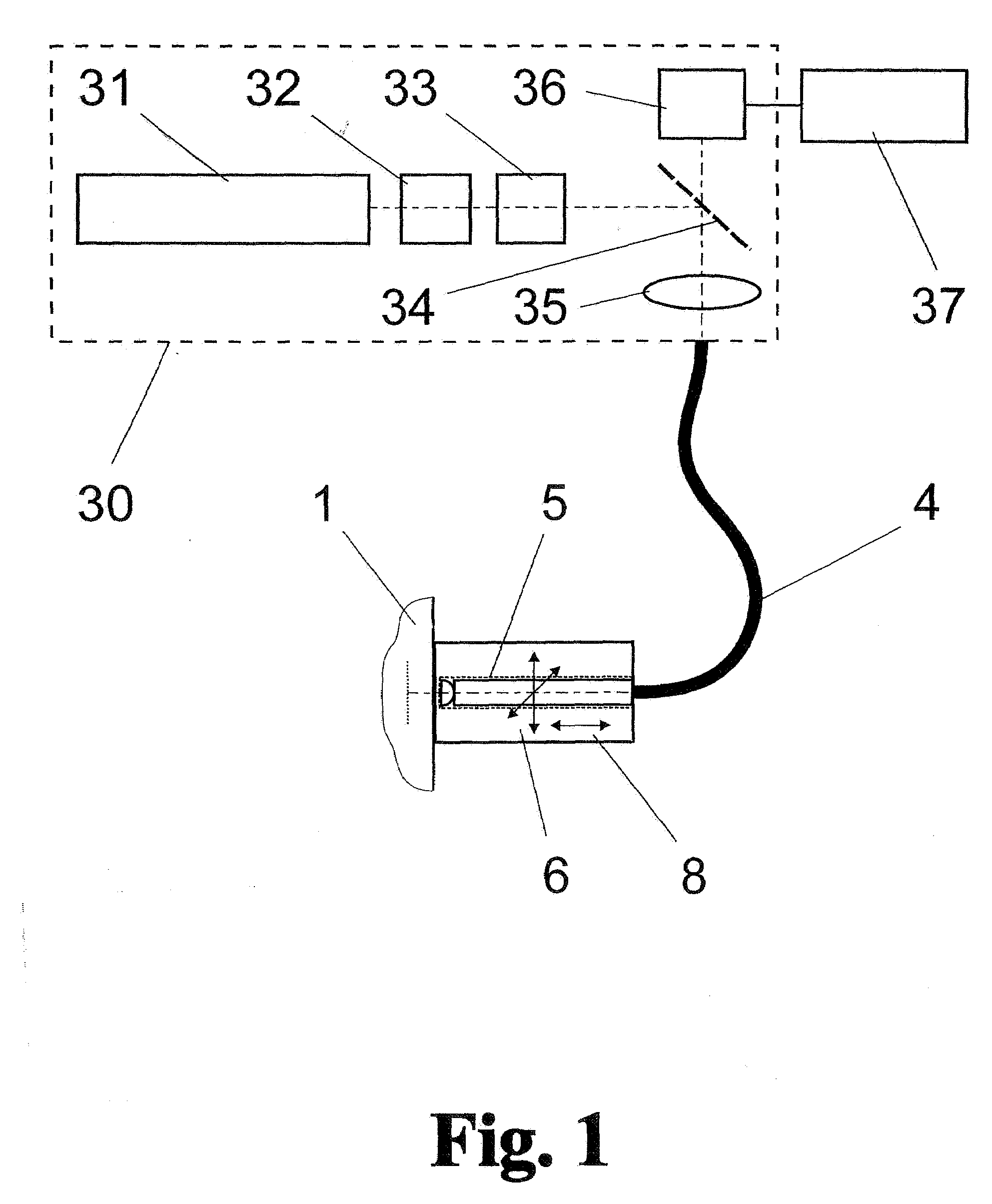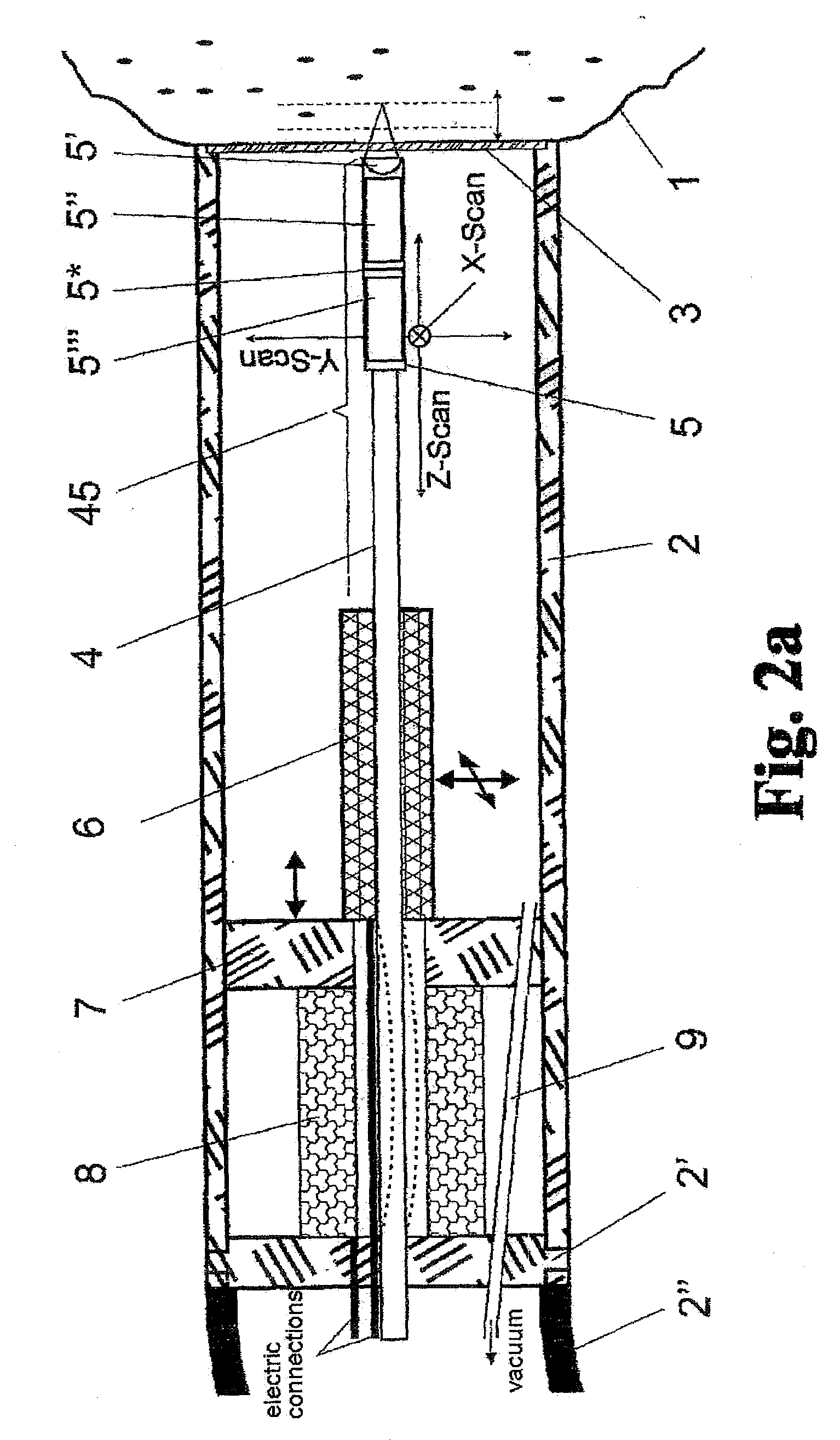Method and arrangement for high-resolution microscope imaging or cutting in laser endoscopy
a laser endoscope and microscope technology, applied in the field of high-resolution microscope imaging or laser endoscopy, can solve the problems of hindering the transmission of femtosecond pulses, low excitation efficiency and detection efficiency, and no commercial light endoscope with focusing optics having a high numerical aperture. achieve the effect of precise imaging and/or micro-cutting
- Summary
- Abstract
- Description
- Claims
- Application Information
AI Technical Summary
Benefits of technology
Problems solved by technology
Method used
Image
Examples
Embodiment Construction
[0070]The method according to the invention will be described in the following—without limiting its universality for the application of other laser-assisted imaging methods—with reference to a femtosecond laser microscope such as is used for single-photon, two-photon and multiphoton microscopy.
[0071]As is shown in FIG. 1, the arrangement comprises an illumination and detection device 30 in which pulsed radiation with an emission wavelength of 780 nm generated by an 80-MHz titanium-sapphire femtosecond laser 31 is transmitted through a shutter 32, a beam attenuator 33 and a dichroic splitter mirror 34 and provided in a focused manner by microscope optics 35 and in which a secondary radiation (e.g., single-photon, two-photon or multiphoton fluorescence, SHG, THG, luminescence, etc.) returning from an object 1 through laser excitation is coupled out through the splitter mirror 34 to a photon detector 36.
[0072]The microscope objective 35 of the illumination and detection device 30 coupl...
PUM
 Login to View More
Login to View More Abstract
Description
Claims
Application Information
 Login to View More
Login to View More - R&D
- Intellectual Property
- Life Sciences
- Materials
- Tech Scout
- Unparalleled Data Quality
- Higher Quality Content
- 60% Fewer Hallucinations
Browse by: Latest US Patents, China's latest patents, Technical Efficacy Thesaurus, Application Domain, Technology Topic, Popular Technical Reports.
© 2025 PatSnap. All rights reserved.Legal|Privacy policy|Modern Slavery Act Transparency Statement|Sitemap|About US| Contact US: help@patsnap.com



